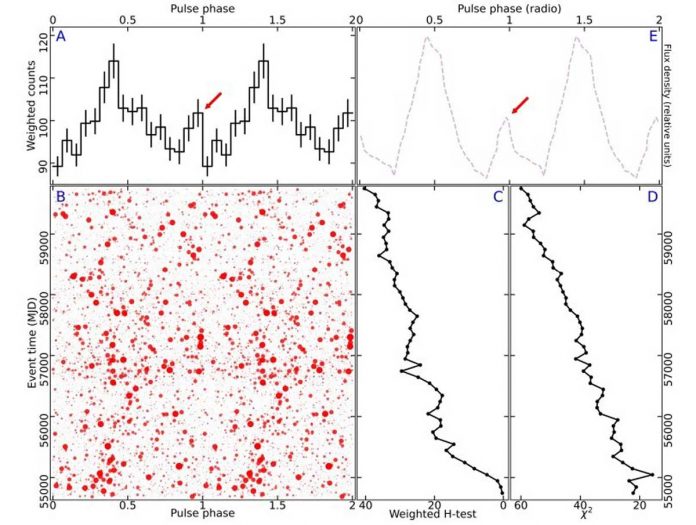Using NASA’s Fermi space telescope, Chinese astronomers investigated PSR J18353259B, a newly discovered millisecond pulsar. As a result, they discovered gamma-ray pulsations coming from this source. The discovery is detailed in a paper published on the arXiv pre-print server on June 27.
Pulsars are rotating neutron stars that emit a beam of electromagnetic radiation. Millisecond pulsars are the fastest rotating pulsars, with rotation periods less than 30 milliseconds (MSPs). Astronomers believe they form in binary systems when the initially more massive component collapses into a neutron star, which is then spun up by matter accretion from the secondary star.
PSR J18353259B is a new MSP found in the globular cluster NGC 6652. It has a spin period of about 1.83 milliseconds and orbits the cluster in a nearly circular orbit that lasts about 28.7 hours. The pulsar’s distance is estimated to be 32,600 light years.
Given that NGC 6652 emits detectable gamma-ray emission, a group of astronomers led by Pengfei Zhang of Yunnan University in Kunming, China, examined PSR J18353259B in the hopes of discovering such emission from this pulsar as well. They did this by analysing data from Fermi’s Large Area Telescope (LAT).
The researchers wrote in their paper, “We performed timing analysis of the LAT data based on the radio ephemeris of PSR J1835-3259B (Gautam et al. 2022) to search for possible gamma-ray pulsations.”
Zhang’s team was able to detect gamma-ray pulsation from PSR J18353259B using Fermi-LAT data collected for NGC 6652 over a 14-year period. The results show that the gamma-ray pulse profile of this MSP is very similar to the radio pulse profile.
Astronomers believe that the observed gamma-ray emission in NGC 6652 is primarily caused by PSR J18353259B. The scientists were unable to determine whether there is likely emission from other MSPs in NGC 6652 because there is no obvious offpulse phase range in the pulse profile and the gamma-ray emission is weak.
As a result, the authors of the paper believe that this is a case similar to globular clusters NGC 6624 and NGC 6626, where one exceptionally bright MSP dominates the observed gamma-ray emission. If this scenario is correct, PSR J18353259B would have a gamma-ray luminosity of 50 decillion erg/s and a gamma-ray efficiency of around 0.12.
“Based on various studies of the sources in the GC, the observed -ray emission from the GC, like the previous two cases, the GCs NGC 6624 and NGC 6626,” the astronomers concluded.

